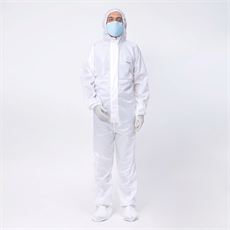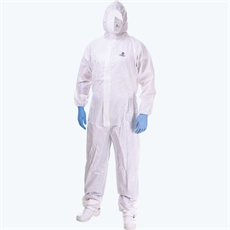The COVID-19 pandemic has had a significant impact on the use and supply of surgical gowns in healthcare settings. Surgical gowns, along with other personal protective equipment (PPE), have become critical resources in the effort to prevent the spread of the virus and protect healthcare workers and patients. Here are some key considerations regarding surgical gowns during the COVID-19 era:
- Increased Demand: The pandemic led to a surge in demand for surgical gowns due to the heightened need for infection control measures. Hospitals and healthcare facilities faced challenges in sourcing an adequate supply of gowns to protect healthcare workers.
- PPE Shortages: At the peak of the pandemic, shortages of PPE, including surgical gowns, were reported in many regions. This emphasized the importance of having robust supply chains and contingency plans for PPE procurement.
- Adaptation of Gown Use: Healthcare facilities adapted their practices to optimize the use of surgical gowns. This included implementing reuse and extended use protocols where appropriate, as well as using alternative types of gowns.
- Guidance and Recommendations: Health authorities, such as the CDC and WHO, issued guidance and recommendations regarding the use of PPE, including surgical gowns, in different healthcare settings. These guidelines were periodically updated based on the evolving understanding of the virus.
- Quality Control and Standards: Due to the urgency of the situation, some regions faced challenges in ensuring that all surgical gowns met quality and safety standards. Authorities worked to expedite approvals for new suppliers while still maintaining safety standards.
- Local Production: Some countries and regions increased their efforts to produce surgical gowns domestically to reduce reliance on international supply chains. This was seen as a way to improve resilience in the face of future pandemics.
- Research and Innovation: The pandemic prompted research and innovation in gown materials and designs. Some manufacturers explored more comfortable and breathable materials, as well as gowns with enhanced viral barrier properties.
- Education and Training: Healthcare workers received training on proper gown donning and doffing procedures to minimize the risk of self-contamination. These procedures were crucial in preventing the spread of the virus within healthcare settings.
- Waste Management: The increased use of disposable PPE, including surgical gowns, led to concerns about environmental impact and proper disposal. Healthcare facilities needed to manage PPE waste responsibly.
- Long-Term Preparedness: The pandemic underscored the importance of long-term preparedness for future public health emergencies. Many healthcare systems and governments have made efforts to establish stockpiles of PPE and improve supply chain resilience.
As the situation with COVID-19 continues to evolve and new variants of the virus emerge, healthcare facilities and governments must remain vigilant and adaptable in their approach to surgical gowns and PPE in general. Learning from the experiences of the pandemic, healthcare systems can better prepare for future challenges related to infectious diseases and the use of protective equipment.























